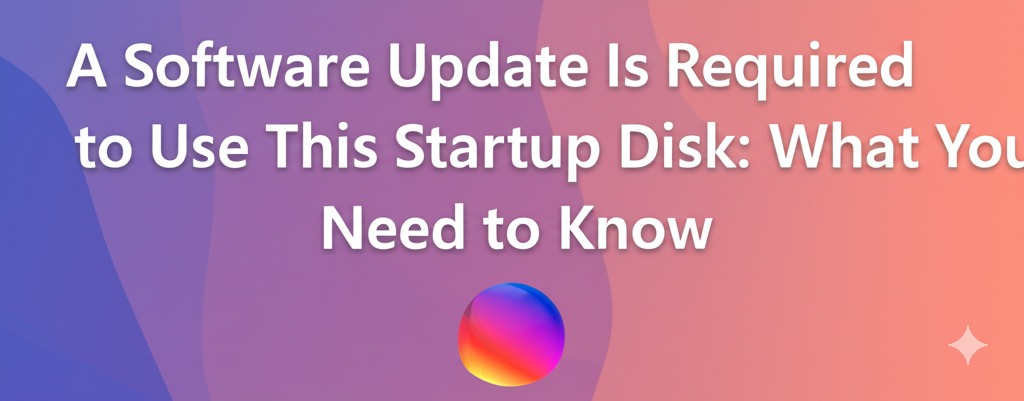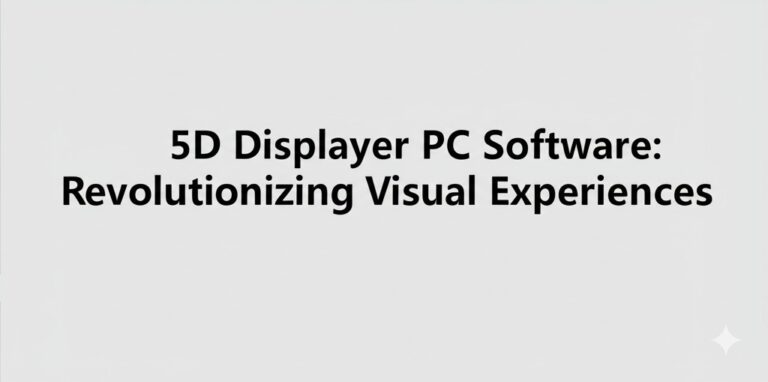A Software Update Is Required to Use This Startup Disk: What You Need to Know
Introduction: Imagine you’re ready to boot up your Mac, but instead of the usual smooth startup, you’re greeted with a message: “A software update is required to use this startup disk.” It’s frustrating, but it’s not an uncommon issue. This message typically indicates that your system’s software is outdated or incompatible with the startup disk you’re trying to use. In this article, we’ll break down the reasons why you might encounter this problem, how to fix it, and how to prevent it from happening in the future.
What Causes the “Software Update Is Required” Message?
When you see the notification saying that a software update is required to use the startup disk, it generally points to one of the following issues:
Outdated macOS Version One of the most common causes of this issue is running an outdated version of macOS that doesn’t support newer versions of startup disks. As Apple updates its operating systems, they may release features that require a more recent software version to function properly.
Incompatible macOS Updates Sometimes, a new macOS update or upgrade can cause compatibility issues between the startup disk and your computer’s current operating system. If a macOS update was recently installed, there’s a chance the system hasn’t yet updated all components required for the disk to function properly.
Disk Format and File System Issues Another possible reason is that the startup disk uses a newer file system format that your current macOS version doesn’t recognize. For example, a disk formatted with the APFS (Apple File System) might be incompatible with older versions of macOS.
How to Fix the “Software Update Is Required” Issue
Now that you know what might be causing the issue, here are a few steps to resolve the problem:
1. Check for macOS Updates The first thing you should do is check if there are any pending updates for your system. To do this, follow these steps:
- Open the Apple menu in the top-left corner of your screen.
- Select “System Preferences” and then click “Software Update.”
- If an update is available, follow the prompts to install it.
Updating your macOS ensures that you have the latest security patches, bug fixes, and compatibility improvements, which may resolve the startup disk issue.
2. Reset NVRAM/PRAM Sometimes, resetting the NVRAM (Non-Volatile Random Access Memory) or PRAM (Parameter RAM) on your Mac can fix startup issues. To reset NVRAM/PRAM:
- Shut down your Mac.
- Turn it on and immediately press and hold the Option + Command + P + R keys.
- Hold these keys for about 20 seconds, then release them.
- Your Mac will restart, and the settings should be reset.
This process clears out some of the system’s preferences and settings, which can sometimes resolve compatibility problems with startup disks.
3. Reformat the Startup Disk If updating macOS doesn’t fix the issue, you might need to reformat the startup disk. However, be warned that reformatting the disk will erase all of its data, so you should back up important files before proceeding.
To reformat the disk:
- Boot your Mac into macOS Recovery mode by restarting and holding Command + R during startup.
- In the macOS Utilities window, select “Disk Utility.”
- Choose the startup disk and click “Erase.”
- Select a compatible format, such as APFS or Mac OS Extended (Journaled), depending on your macOS version.
- Click “Erase” and then reinstall macOS.
4. Use a Bootable Installer If the issue persists, you can try using a bootable installer to reinstall macOS on the startup disk. This will ensure that the disk is properly formatted and the operating system is correctly installed.
To create a bootable installer, you’ll need:
- A USB drive with at least 16GB of space.
- A copy of the macOS installer from the Mac App Store.
Once you’ve created the bootable installer, restart your Mac, hold the Option key, and select the installer to boot from. Follow the instructions to reinstall macOS.
Preventing Future Issues: How to Keep Your System Running Smoothly
To avoid encountering the “software update is required” message in the future, follow these tips:
1. Keep macOS Up to Date Make sure to regularly check for macOS updates and install them as soon as they’re available. Regular updates not only improve system performance but also ensure compatibility with new hardware and software.
2. Back Up Your Data Always back up your important data using Time Machine or an external backup solution. This ensures that, if you need to reformat a disk or reinstall macOS, you won’t lose valuable files.
3. Avoid Unnecessary System Modifications Be cautious when making changes to system settings, installing third-party software, or modifying disk partitions. These actions can sometimes lead to compatibility problems that might trigger startup disk issues.
Conclusion:
Encountering the “A software update is required to use this startup disk” message can be frustrating, but it’s usually solvable with a few simple steps. By checking for updates, resetting NVRAM, or even reformatting the disk if necessary, you can get your system back up and running in no time. Remember to keep your macOS up to date and back up your data regularly to prevent future issues.
If you continue to face difficulties, consider reaching out to Apple Support or visiting an Apple Store for further assistance. Don’t let technical issues keep you from enjoying your Mac—take action today to resolve the problem!

Zain Jacobs is a writer for TheNetUse, providing in-depth reviews, tips, and insights on the latest software apps to help users maximize their digital experience.







